Instruction
Three different ways to set up to the golf ball
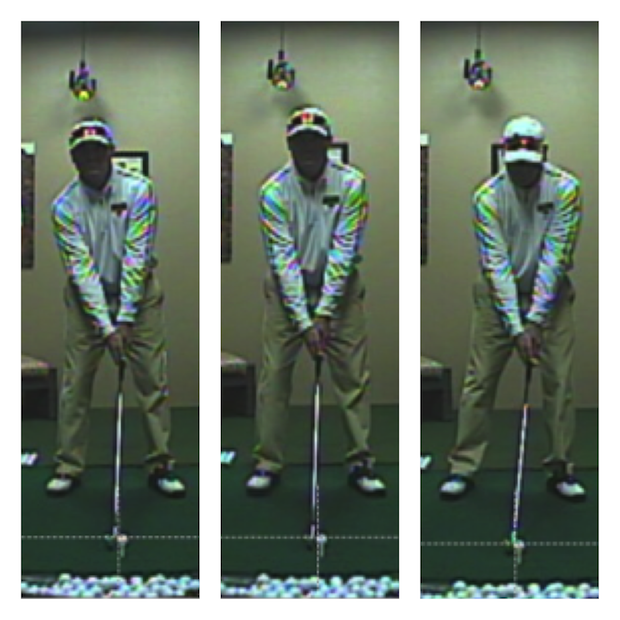
Over the course of time there have been several different setup positions that people have used to play successful golf. The most frequently taught setup position, which I call the Right Tilt, has golfers leaning away from the target at address, but new trends have emerged. It’s not not uncommon to see golfers today that lean toward the target at address, and the latest trend on Tour is for golfers to set up with the spine basically centered in the middle of the body.
Each of these positions can have positive and negatives attached to them, but I will say that if a player can handle a centered set-up position it can make it much easier for them to return the club to the ball time after time if they fight poor contact. Why is that, you’re probably asking? Most golfers have trouble controlling their low point at impact, and whenever a golfer has to move laterally in their back swing it tends to skew a golfer’s control of their low point. That leads to more fat and thin shots.
Let’s examine visuals of the three different pivots from set-up to the top. They’re described in terms for a right-handed golfer, so if you’re a lefty with a left tilt, you’ll want to pay special attention to “The Right Tilt.” If you’re a lefty with a right tilt, you’ll want to play special attention to “The Left Tilt.”
- The Right Tilt
- The Centered Pivot
- The Left Tilt
After reviewing these set up positions and pivot motions, I think you will be able to figure out which works best for your own game. Remember, there is NO wrong answer.
The Right Tilt
In the Right Tilt position, you will see that the spine is leaning away from the target at address a few inches. This places the rear shoulder under the lead shoulder at address. It will also place the head a touch behind the ball at address as well and 55-to-60 percent of a golfer’s weight on their rear foot at address.
The more a golfer tilts to the right, the more weight will move to the right and the more the shoulders will tend to close at address. Be careful not to allow the hands to push too far past the inside of the forward thigh, as this can open your shoulders at address.
At the top, you will see that the head has moved a touch laterally (to the right for a right-handed golfer), and there is an extreme amount of weight on the inside portion of the right foot. This lean over the right leg also will make the shoulder turn a touch flatter or more rounded, making it a better position for less flexible players to get into if they cannot make a full turn to the top. While making this rounded motion to the top, you will also notice that the rear elbow will stay a touch closer to the body for most players due to the more rotated shoulder turn. Finally, in this pivot motion, the rear knee will remain flexed to the top of the backswing to prevent overturning of the body so golfers can remain in balance.
Tour Players whom have used this setup include Si Re Pak, Peter Jacobsen, Tiger Woods (early in his career) and Greg Norman. These players set up behind the ball and had some lean over their right legs at the top of their backswings. This provided them with extra width and necessitated a big lateral move back through impact in order to get “back to the ball.” Some players had issues moving this much from side to side, and other setup styles were born.
The Centered Pivot
In the centered address position, you will notice that the spine is vertical and the hands are located on the forward portion of the zipper on the target-side. As you can see from the left frame, the weight is distributed 50 percent on each foot while the shoulders are square to the target line. Be careful when you center your spine, as you can easily lean your weight too much toward the target. That can get your shoulders open at address and throw off your swing plane on the way to the top. I also like to see the feet rotated slightly outward in this setup position, which allows a free pivot back and through.
As you reach the top of your backswing, you will notice that the rear knee has straightened slightly. That keeps the weight in the middle of the body, creating the point golfers will pivot around on the way down to keep them “centered.”
The spine is leaning slightly to the right of center, and the shoulders have made a full turn to the top. From here, you can also see that the rear arm is tucked inward and there is plenty of width of the right arm at the top of the backswing. Having this position will help golfers create a shorter arm swing to the top. If the rear shoulder moves behind the player’s neck in the top view, the player will tend to fall toward the target on the way down, getting the player in front of the ball.
Tour players that setup with a centered pivot include Stuart Appleby, Tiger Woods (under Sean Foley) and Mac O’Grady. This style of set up dictates a more centered motion and less lateral action than its right-bending predecessor possessed. Low point control under this action is much easier for most players, but some tend to get in front of the ball when using this set-up style if they are not careful. Personally, I love the idea of staying “centered.” It makes sense to me, but not everyone can make their body work this way.
The Left Tilt
In the left tilt, the spine is indeed leaning leftward, placing most of a golfer’s weight on the forward foot. The head is even to slightly in front of the ball (to some degree) from the overhead position. This set up position will help golfers to make sure that they hit more down on the ball, as it tends to steepen the angle of attack. As always, try to keep the shoulders square at address as shown above.
In the top position of the leftward tilt, you can see that the body has not moved to the right and most of the weight is on the forward foot to the top. This is helped in part by a straightening of the right knee to the top, which tilts the right femur inward and keeps the weight more leftward. As you can see, this player has to work hard to keep the shoulders turning behind the ball and the swing will tend to be a touch more upright than the one created by the centered pivot position. Once again, the arms are extended so the swing can have width to the top as well.
The stack-and-tilt era has come and gone on Tour, but it’s not forgotten by many good players. Mike Weir, Aaron Baddeley and Eric Axley used this style for a time within their careers. I personally believe that it has great merits for players with poor iron consistency, but its downfall tends to be the steepening of the angle of attack on the driver. That’s not with all players, however.
Staying left throughout the whole swing as we tend to do in the short game can really help golfers gain compression with their irons and stop the fat shots the other styles tend to promote. The only thing golfers must remember to do is not fall “backward” through impact, which causes a reverse pivot.
Experiment with these three setup positions and see which works best for your game. Each has its own merits, but only you can decide what one works best for you.
- LIKE61
- LEGIT4
- WOW1
- LOL0
- IDHT0
- FLOP0
- OB0
- SHANK6
Instruction
The Wedge Guy: The easiest-to-learn golf basic

My golf learning began with this simple fact – if you don’t have a fundamentally sound hold on the golf club, it is practically impossible for your body to execute a fundamentally sound golf swing. I’m still a big believer that the golf swing is much easier to execute if you begin with the proper hold on the club.
As you might imagine, I come into contact with hundreds of golfers of all skill levels. And it is very rare to see a good player with a bad hold on the golf club. There are some exceptions, for sure, but they are very few and very far between, and they typically have beat so many balls with their poor grip that they’ve found a way to work around it.
The reality of biophysics is that the body moves only in certain ways – and the particulars of the way you hold the golf club can totally prevent a sound swing motion that allows the club to release properly through the impact zone. The wonderful thing is that anyone can learn how to put a fundamentally sound hold on the golf club, and you can practice it anywhere your hands are not otherwise engaged, like watching TV or just sitting and relaxing.
Whether you prefer an overlap, interlock or full-finger (not baseball!) grip on the club, the same fundamentals apply. Here are the major grip faults I see most often, in the order of the frequency:
Mis-aligned hands
By this I mean that the palms of the two hands are not parallel to each other. Too many golfers have a weak left hand and strong right, or vice versa. The easiest way to learn how to hold the club with your palms aligned properly is to grip a plain wooden ruler or yardstick. It forces the hands to align properly and shows you how that feels. If you grip and re-grip a yardstick several times, then grip a club, you’ll see that the learning curve is almost immediate.
The position of the grip in the upper/left hand
I also observe many golfers who have the butt of the grip too far into the heel pad of the upper hand (the left hand for right-handed players). It’s amazing how much easier it is to release the club through the ball if even 1/4-1/2″ of the butt is beyond the left heel pad. Try this yourself to see what I mean. Swing the club freely with just your left hand and notice the difference in its release from when you hold it at the end of the grip, versus gripping down even a half inch.
To help you really understand how this works, go to the range and hit shots with your five-iron gripped down a full inch to make the club the same length as your seven-iron. You will probably see an amazing shot shape difference, and likely not see as much distance loss as you would expect.
Too much lower (right) hand on the club
It seems like almost all golfers of 8-10 handicap or higher have the club too far into the palm of the lower hand, because that feels “good” if you are trying to control the path of the clubhead to the ball. But the golf swing is not an effort to hit at the ball – it is a swing of the club. The proper hold on the club has the grip underneath the pad at the base of the fingers. This will likely feel “weak” to you — like you cannot control the club like that. EXACTLY. You should not be trying to control the club with your lower/master hand.
Gripping too tightly
Nearly all golfers hold the club too tightly, which tenses up the forearms and prevents a proper release of the club through impact. In order for the club to move back and through properly, you must feel that the club is controlled by the last three fingers of the upper hand, and the middle two fingers of the lower hand. If you engage your thumbs and forefingers in “holding” the club, the result will almost always be a grip that is too tight. Try this for yourself. Hold the club in your upper hand only, and squeeze firmly with just the last three fingers, with the forefinger and thumb off the club entirely. You have good control, but your forearms are not tense. Then begin to squeeze down with your thumb and forefinger and observe the tensing of the entire forearm. This is the way we are made, so the key to preventing tenseness in the arms is to hold the club very lightly with the “pinchers” — the thumbs and forefingers.
So, those are what I believe are the four fundamentals of a good grip. Anyone can learn them in their home or office very quickly. There is no easier way to improve your ball striking consistency and add distance than giving more attention to the way you hold the golf club.
More from the Wedge Guy
- The Wedge Guy: Golf mastery begins with your wedge game
- The Wedge Guy: Why golf is 20 times harder than brain surgery
- The Wedge Guy: Musings on the golf ball rollback
- LIKE83
- LEGIT13
- WOW5
- LOL1
- IDHT0
- FLOP4
- OB1
- SHANK8
Instruction
Clement: Stop ripping off your swing with this drill!

Not the dreaded headcover under the armpit drill! As if your body is defective and can’t function by itself! Have you seen how incredible the human machine is with all the incredible feats of agility all kinds of athletes are accomplishing? You think your body is so defective (the good Lord is laughing his head off at you) that it needs a headcover tucked under the armpit so you can swing like T-Rex?
- LIKE0
- LEGIT2
- WOW2
- LOL0
- IDHT0
- FLOP0
- OB0
- SHANK2
Instruction
How a towel can fix your golf swing

This is a classic drill that has been used for decades. However, the world of marketed training aids has grown so much during that time that this simple practice has been virtually forgotten. Because why teach people how to play golf using everyday items when you can create and sell a product that reinforces the same thing? Nevertheless, I am here to give you helpful advice without running to the nearest Edwin Watts or adding something to your Amazon cart.
For the “scoring clubs,” having a solid connection between the arms and body during the swing, especially through impact, is paramount to creating long-lasting consistency. And keeping that connection throughout the swing helps rotate the shoulders more to generate more power to help you hit it farther. So, how does this drill work, and what will your game benefit from it? Well, let’s get into it.
Setup
You can use this for basic chip shots up to complete swings. I use this with every club in my bag, up to a 9 or 8-iron. It’s natural to create incrementally more separation between the arms and body as you progress up the set. So doing this with a high iron or a wood is not recommended.
While you set up to hit a ball, simply tuck the towel underneath both armpits. The length of the towel will determine how tight it will be across your chest but don’t make it so loose that it gets in the way of your vision. After both sides are tucked, make some focused swings, keeping both arms firmly connected to the body during the backswing and follow through. (Note: It’s normal to lose connection on your lead arm during your finishing pose.) When you’re ready, put a ball in the way of those swings and get to work.

Get a Better Shoulder Turn
Many of us struggle to have proper shoulder rotation in our golf swing, especially during long layoffs. Making a swing that is all arms and no shoulders is a surefire way to have less control with wedges and less distance with full swings. Notice how I can get in a similar-looking position in both 60° wedge photos. However, one is weak and uncontrollable, while the other is strong and connected. One allows me to use my larger muscles to create my swing, and one doesn’t. The follow-through is another critical point where having a good connection, as well as solid shoulder rotation, is a must. This drill is great for those who tend to have a “chicken wing” form in their lead arm, which happens when it becomes separated from the body through impact.
In full swings, getting your shoulders to rotate in your golf swing is a great way to reinforce proper weight distribution. If your swing is all arms, it’s much harder to get your weight to naturally shift to the inside part of your trail foot in the backswing. Sure, you could make the mistake of “sliding” to get weight on your back foot, but that doesn’t fix the issue. You must turn into your trial leg to generate power. Additionally, look at the difference in separation between my hands and my head in the 8-iron examples. The green picture has more separation and has my hands lower. This will help me lessen my angle of attack and make it easier to hit the inside part of the golf ball, rather than the over-the-top move that the other picture produces.


Stay Better Connected in the Backswing
When you don’t keep everything in your upper body working as one, getting to a good spot at the top of your swing is very hard to do. It would take impeccable timing along with great hand-eye coordination to hit quality shots with any sort of regularity if the arms are working separately from the body.
Notice in the red pictures of both my 60-degree wedge and 8-iron how high my hands are and the fact you can clearly see my shoulder through the gap in my arms. That has happened because the right arm, just above my elbow, has become totally disconnected from my body. That separation causes me to lift my hands as well as lose some of the extension in my left arm. This has been corrected in the green pictures by using this drill to reinforce that connection. It will also make you focus on keeping the lead arm close to your body as well. Because the moment either one loses that relationship, the towel falls.


Conclusion
I have been diligent this year in finding a few drills that target some of the issues that plague my golf game; either by simply forgetting fundamental things or by coming to terms with the faults that have bitten me my whole career. I have found that having a few drills to fall back on to reinforce certain feelings helps me find my game a little easier, and the “towel drill” is most definitely one of them.
- LIKE12
- LEGIT2
- WOW2
- LOL0
- IDHT0
- FLOP2
- OB0
- SHANK8
-

 19th Hole2 weeks ago
19th Hole2 weeks agoJohn Daly stuns fans into silence with brutal opening tee shot on PGA Tour Champions
-

 19th Hole1 week ago
19th Hole1 week agoThings got heated at the Houston Open between Tony Finau and Alejandro Tosti. Here’s why
-

 19th Hole6 days ago
19th Hole6 days agoReport: Tiger Woods has ‘eliminated sex’ in preparation for the 2024 Masters
-

 19th Hole3 weeks ago
19th Hole3 weeks ago2-time major champ announces shock retirement from the sport at age of 33
-

 19th Hole3 weeks ago
19th Hole3 weeks agoEdoardo Molinari reveals the latest PGA Tour golfer to turn down ‘good offer’ from LIV Golf
-

 19th Hole2 weeks ago
19th Hole2 weeks agoCharlie Woods finds it tough going on American Junior Golf Association debut
-

 19th Hole1 week ago
19th Hole1 week agoAddiction, spinal fusion, and scam artists – Everything Anthony Kim revealed in candid interview with David Feherty
-

 19th Hole5 days ago
19th Hole5 days agoAnthony Kim says doctors told him that he ‘may not have much time left’ ahead of LIV return

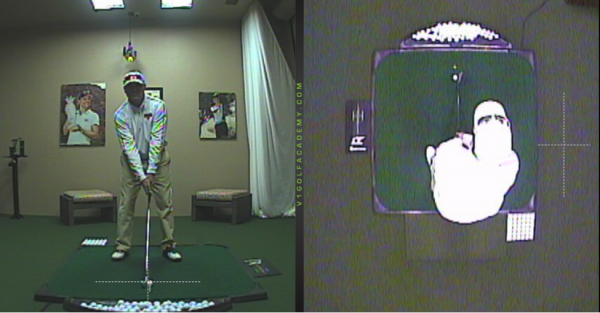
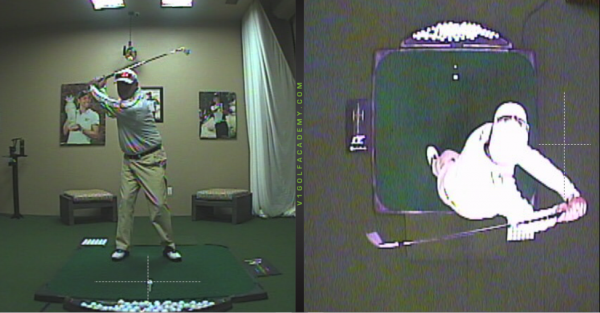
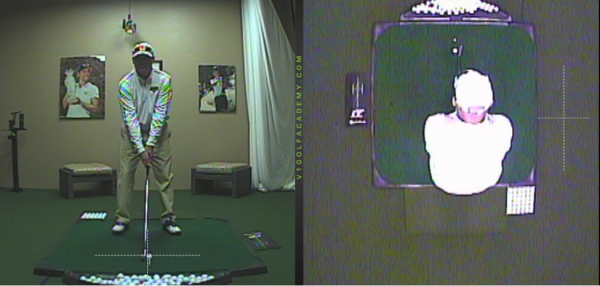
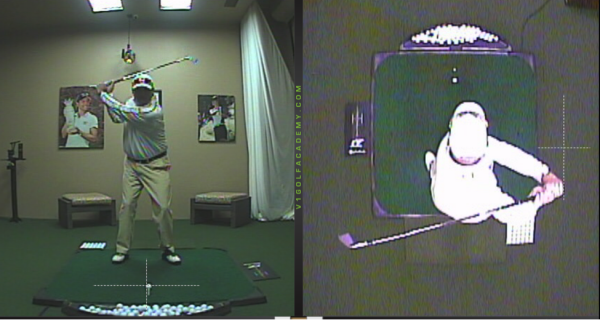
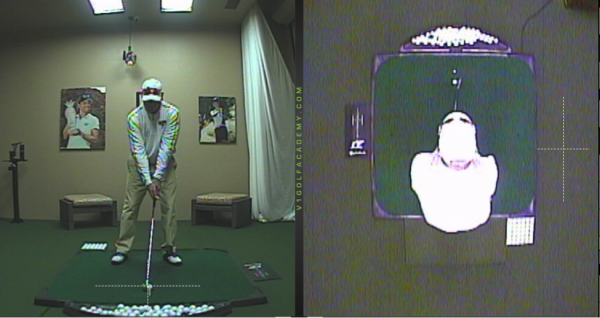
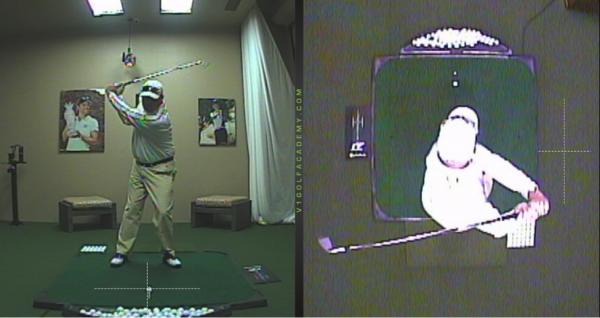










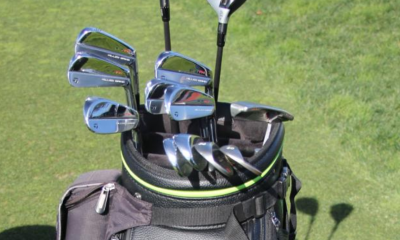

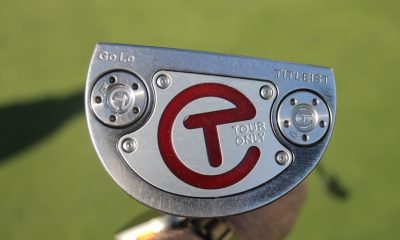

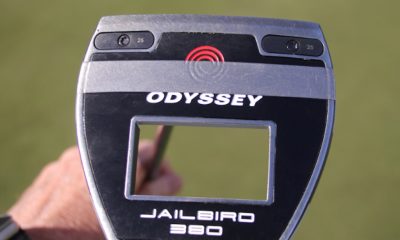

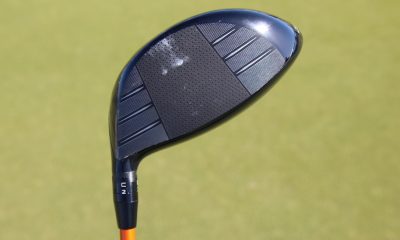

Steph O'Rear
Sep 22, 2018 at 4:52 pm
I followed the advice here for a leftie and took it to the range today. WHAT A DIFFERENCE IN MY BALLSTRIKING!!! And it is so easy, pretty much effortless. Thank you so much for writing this article. Every other article that I have read over the years, books included, ALWAYS say to ‘hit down’ but no one ever said HOW to do so. That key was the secret that I have been looking for, since forever. Thanks again. What a fantastic day!!!
froneputt
May 7, 2014 at 7:31 am
More of a center pivot type but on S&T, over the last two years, they advocate a right tilt with longer clubs. Even center pivot instructors advocate a right tilt, and the right tilt is done with the hips not the shoulders. It’s also been shown with pressure plates that weight does transfer to the back foot (greater than 50%) in S&T and center pivot (rear leg straightens with pressure), and that the first move shifts weight drastically to the front foot. And I’ve never seen S&T advocate a left tilt at address.
tom stickney
May 13, 2014 at 3:33 pm
The have changed their model a touch with the advent of pressure plates etc…we all adapt our instructional styles as new information becomes available. Kudos to them for being open to slight changes…that’s why they are great teachers!
Ferdie
May 7, 2014 at 4:33 am
I used to lean left using a variation of S&T but my pro asked me to tilt my spine right a bit. It made my launch higher and swing more shallow, which are both good. I still try to keep my weight left although my tilt seems to balance this off. So far, it’s been good. Is there any problem with this combined setup?
tom stickney
May 13, 2014 at 3:31 pm
Try to keep it to a minimum…don’t want to mix styles too much
Stretch
Apr 2, 2014 at 1:36 pm
E.A. Tischler has a test to see which of the pivots (left, center and right) a golfer will be most successful with. He does advocate tilting the torso away from the target no matter which suits the golfer. Kudos to Tom for bringing up this observation for discussion.
tom stickney
May 13, 2014 at 3:30 pm
EA knows his stuff for sure
Roger Ackerman
Mar 30, 2014 at 1:31 am
I
dazzi
Mar 27, 2014 at 5:12 pm
Jim Hardy has commented on Adam Scott as being one of very few guys that fall exactly between a one and a two plane, at the top of the backseing that is! I cannot remember the numbers, but he´s a tweener! Left arm vs shoulders at top!
cheers
Tom Stickney
Mar 27, 2014 at 5:56 pm
Adam Scott is a stud! 🙂
Tom Stickney
Mar 27, 2014 at 5:58 pm
He has one of the best moves ever….look out Augusta
John M
Mar 27, 2014 at 3:50 pm
Great article! Took your advice as I have always played centered. After a little trial and error left tilt is a much better fit for me. As you indicated my “miss” was fat. With the left tilt my irons are flush 95% of the time; the other 5 is a work in progress.
Thanks for the advice.
Tom Stickney
Mar 27, 2014 at 5:53 pm
My pleasure
WA Smith
Mar 26, 2014 at 9:56 pm
I don’t believe you are correct in attaching the stack and tilt swing monicker as the only left tilt style. Hogan and Snead were definitely not s&t swing styles. It would be better to leave the description as left tilt and not go into s&t only or at all without further investigation of the method as it is not the only swing style with a left tilt. Just didn’t like the implication that all left tilt swingers were s&t which I am hopeful you didn’t really mean.
Tom Stickney
Mar 26, 2014 at 10:49 pm
They were more centered swing styles…
Dave
Mar 27, 2014 at 9:18 am
Yup, centered.
Matt
Mar 27, 2014 at 7:29 pm
Probably because no pros lean their spines left at setup including stack and tilt pros.
Jimbob
Mar 26, 2014 at 12:00 pm
Tom,
Nice article. I would recommend that in the future you are more careful with any comments related to S&T. As you can see, the cult like following is ready to attack anyone who questions their religion! Always remember that EVERY great player in the history of the game used some variation of S&T, they have the pictures and logarithm numbers to prove it!
Tom Stickney
Mar 26, 2014 at 3:53 pm
Jim…nice that you believe in st and it’s merits but I still disagree that there is one swing model to fit the masses. If you are including all the variations of st in your argument I will agree 100% that it’s a very valid swing pattern for most golfers. Thx.
J Evans
Mar 26, 2014 at 11:57 am
Hi Tom, thanks for this article. Concerning the address set-up, and hands and shaft placement in particular, is it ok the have the left arm and shaft in “one continuous line”, that is, the shaft becomes and extension of the left arm angled at address. So, that would be, hands forward and the left arm and shaft as “one”, if you can “see” what i’m trying to describe? What your take on that? Thank You.
Tom Stickney
Mar 26, 2014 at 3:43 pm
As long as you don’t open your shoulders in the process
jeff
Mar 24, 2014 at 11:43 pm
Excellent article. The stack and tilt guys are overly sensitive and hurting a lot of players. You pointed out clearly what each setup tendencies are. Well Done.
Mad-Mex
Mar 24, 2014 at 11:01 pm
Lee Trevino, Chi-Chi Rodriguez, Arnold Palmer, Jack Nicklaus, Ben Hogan, Payne Stewart, Jim Furyk,,,,,,,,,,,,, All had different swings, but like it was said by Lee Trevino, it is the last 6 inches of the golf club path before it strikes the ball that matters,,,,
Tom Stickney
Mar 24, 2014 at 11:25 pm
He’s a member where I teach in the winter and he is correct…poetry in motion still at age 72 or so. Love to watch him hit balls.
Heyo
Mar 24, 2014 at 7:32 pm
Hey Tom- what’s your opinion about turning around the left leg for irons, right leg for driver? Is that ok, or would you rather see a consistent setup position for all clubs?
Tom Stickney
Mar 24, 2014 at 7:47 pm
It’s tough to do both. I’d pick one…
andy plumer
Mar 24, 2014 at 6:10 pm
come and gone? poor.
tom stickney
Mar 24, 2014 at 6:45 pm
Wasn’t trying to insult ST players or teachers whatsoever…sorry if it came across that way…still a big fan of the merits of ST for many players
Matt
Mar 24, 2014 at 4:36 pm
Tom,
One thing I would add is that all 3 swings you show have left tilt in the back swing. 100% of the population of professional golfers left tilt in their back swing. The back swing is a combination of left tilt, turn, and extension. Even players in your “Right Tilt” setup position left tilt and extend in the back swing they just do it to a lesser degree which allows their upper center to move off the ball. Also, most professionals shallow their swings with the driver by keeping their upper centers relatively still and relying on secondary axis tilt not by moving their upper center back. Also, I have never heard of a “Left Tilt” setup where the spine is actually tilted left at setup. Certainly no pros have ever done this. If try to stay centered at address, your spine will still have about 5 degrees of “right tilt” because your right hand is on the grip below your left.
tom stickney
Mar 24, 2014 at 5:53 pm
Matt–
Some of the stack and tilt’ers did indeed have left tilting set-ups.
Matt
Mar 24, 2014 at 5:58 pm
Tom – I don’t know exactly, but I think the stack and tilt baseline is about 5 degrees of “right tilt” at address. Which stack and tilt players have you measured?
Jim
Mar 25, 2014 at 9:11 pm
Tom – not a single stack and tilt pro (former or current) ever set up with a spine that leans toward the target. Unfortunately you are doing more harm than good with your information.
Matt
Apr 28, 2014 at 4:41 pm
Tom, to clarify, when you say “Left Titling setups” are you referring to side bend? I just reviewed a 3D trace of 3 stack and tilt pro’s spine and at address, the spine is nearly level with approximately 3 degrees of right tilt (not left). In fact none of the pros measured ever had left side bend at address. I’d love to know where you got your information, or did you kind of just make it up?
TheLegend
Mar 24, 2014 at 4:07 pm
No such thing as a 1 plane swing.
Joseph
Mar 24, 2014 at 5:16 pm
You are not just wrong, you’re stupid.
MHendon
Mar 24, 2014 at 5:39 pm
Well that was just plain rude and uncalled for. My guess is he’s simply implying no one truly keeps the club on the exact same plane backwards and forwards no matter how hard they try. Not Tiger Woods or even Adam Scott who’s probably the closest.
tom stickney
Mar 24, 2014 at 5:55 pm
MH–
I wasn’t being rude at all– I’m a big fan of Jim Hardy’s work, just don’t recall of the top of my head the exact way he’d suggest setting up, thus my reply.
Evan
Mar 25, 2014 at 3:06 pm
One plane swings are characterized by the measurement of the shoulder angle vs. left arm angle being very similar. A true one plane swing would rotate shoulder and arms at the same angle to contact the ball. Most swings have slightly higher arm angle vs shoulder angle. Adam Scott is a classic two planer, not a one planer. Best examples of a one planer on tour would probably be Matt Kuchar or Jason Dufner.
tom stickney
Mar 24, 2014 at 5:56 pm
J–
Please don’t berate the people whom have taken the time to comment…right or wrong they are entitled to their opinions.
tom stickney
Mar 24, 2014 at 5:57 pm
The-
I have seen many one plane swings on the lesson tee over the years…
tom stickney
Mar 24, 2014 at 3:46 pm
You’d have to consult Jim Hardy’s book…can’t speak for his preferences.
renoaz
Mar 24, 2014 at 3:02 pm
Gary Edwin teaches a variation of the “Left Tilt” he calls The Right Sided Swing. Rod Pampling has been a student of his for decades. I use his setup technique which has improved my ball striking and a balanced finish facing the target.
tom stickney
Mar 24, 2014 at 3:45 pm
Rod can flat hit it for sure….
Tom
Mar 24, 2014 at 4:13 pm
Gary’s is more a variation of the right tilt (than left), but accentuated to form a reverse K shape in the body.
I’m also a student of the Right-Sided Swing too and found it successful so far; it’s an easy to grasp, repeatable shape and motion.
paul
Mar 24, 2014 at 2:39 pm
Is one address position better or worse for single plane swingers? I started playing golf a few years ago and people around me that I thought knew about golf told me I had a one plane swing (I now know that they don’t know much). Difficult to find information on this swing. I stay fairly neutral for irons, but tilt a little back for the driver to help hitting up.
Roger Ackerman
Mar 30, 2014 at 1:33 am
I